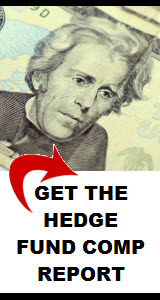Investors began 2018 with a cautiously optimistic view, duly supported by 2017’s positive returns, which paralleled the market rally. Hedge fund managers, broadly speaking, shared this hopeful vision and looked forward to improved performance and enhanced fundraising opportunities in 2018.
A Look Back
The year 2018 opened with a robust January HFR asset weighted composite index score of 2.74 percent, but by the end of the first quarter, negative gains in February and March had whittled that down to a meager 0.48 percent gain. Worth noting, is the fact that the Dow Jones Industrial Average (DJIA) fell 2.49 percent in the same period, allowing hedge fund investors to continue to hold their heads high.
2018’s second quarter continued to be marred by losses in April and June of -0.05 and -0.14 percent respectively. May, 2018 turned in a positive result of 0.65 percent, bringing overall second quarter gains to 0.65 percent, which translated into first half gains of 1.23 percent.
Meanwhile, the DJIA turned positive in Q2, gaining 0.7 percent. However, first half gains for the DJIA were deeply into negative territory at -1.8 percent, once again providing cover for those investors so bold as to allocate to hedge funds.
Quarter 3 was an overall positive one for hedge funds, with positive gains posted in July and in August of 0.18 and 0.48 percent respectively. However, October slipped into negative territory, falling -0.05 percent. Nonetheless, overall Q3 gains stood at 0.61 percent and, year-to-date, the HFR asset weighted composite index had achieved 1.68 percent.
Concurrently, the DJIA rocketed, resulting in year-to-date gains of 7.03 percent through the end of September, 2018, which left hedge fund investors scratching their heads.
The story of Q4 is very similar to Q3, with October and November gains in dark territory, at -2.71 and -0.41 percent, respectively. Through November, 2018, year to date gains were negative, albeit narrowly at -0.06 percent. HFR has not published its December data at the time of this writing, but it is unlikely that hedge fund year-to-date losses will exceed those of the DJIA or the S&P 500.
For the DJIA, Q4 was nothing short of a debacle, with year-to-date gains plummeting by -5.63 percent.
Other Noteworthy Data
2018 was marked by a 38 percent decrease in the number of hedge fund firms pursing an equity strategy, falling from 48 percent of firms in 2017 to 30 percent of firms in 2018. Although the equity strategy remains the most popular, at 30 percent, credit strategies are nipping at their heels, rising to 29 percent of hedge fund firm strategies.
Hedge fund fees continue to retreat, with 83 percent of hedge fund firms charging a management fee of less than 2 percent. Just 13 percent of hedge fund firms charged a 2 percent management fee in 2018, and only 4 percent of hedge fund firms charged management fees in excess of 2 percent.
What about Hedge Fund Jobs?
Predictably, hedge fund job seekers will see significant negative press on the hedge fund industry’s performance in 2018—don’t allow this to dissuade you from your goals. After all, the S&P 500 was down -6.24 percent, year ending 2018, a benchmark that hedge funds will no doubt beat by a significant margin. The hedge fund industry continues to play a significant role in the U.S. economy and we fully expect job prospects will mirror that significance.






Comments on this entry are closed.